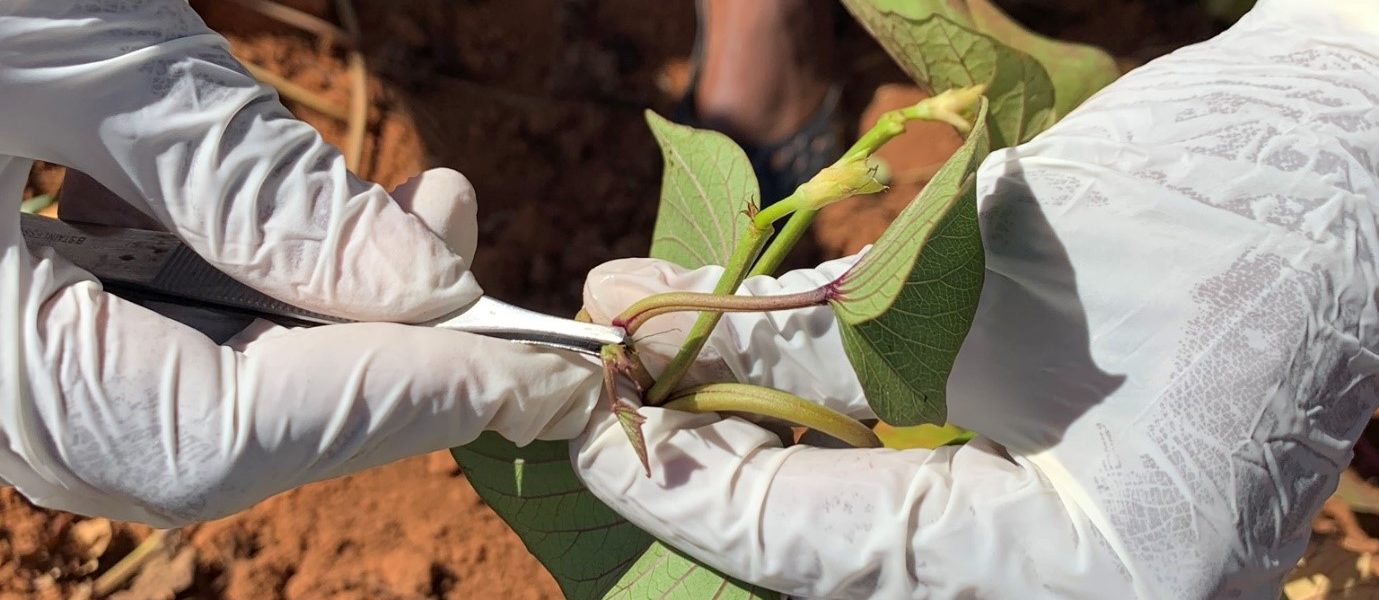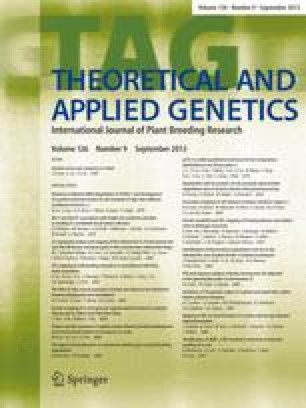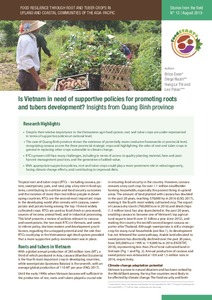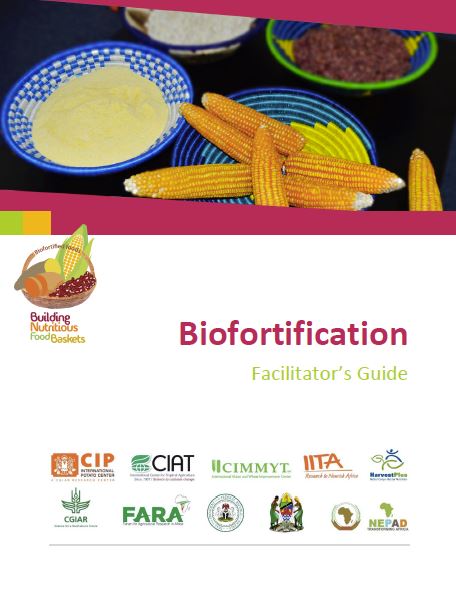Households in Malawi that participated in projects promoting orange-fleshed sweetpotato (OFSP) varieties continued to grow the new varieties even several years after the interventions had concluded. A first-of-its-kind study in Malawi led by scientists at the International Potato Center (CIP) also suggests that the adoption rates by households not involved in projects were still quite high, highlighting how delivery models don’t need to saturate communities to achieve wide-scale adoption.
Since 2009, numerous research, development and funding agencies have worked with the Government of Malawi to develop and disseminate biofortified, vitamin A-rich OFSP varieties. The projects aimed to increase OFSP production and consumption among populations at risk of vitamin A deficiency by focusing on women of childbearing age and children under five years of age in smallholder farm households. Between 2009–2019, an estimated 500,000 households received at least one bundle of OFSP planting material as a direct or indirect result of various project interventions.
“We wanted to determine how many of those households were still cultivating OFSP varieties two years after the last project intervention,” said Marcel Gatto, an agricultural economist with CIP and the lead author of the study. “We analyzed the adoption of OFSP mainly by focusing on the varieties introduced and disseminated through the OFSP projects until 2017.”
The researchers collected data by surveying about 2,500 households across 27 districts in Malawi. The sample compared OFSP intervention effects on project participants, non-participants in the same intervention villages, with households in villages without project interventions.
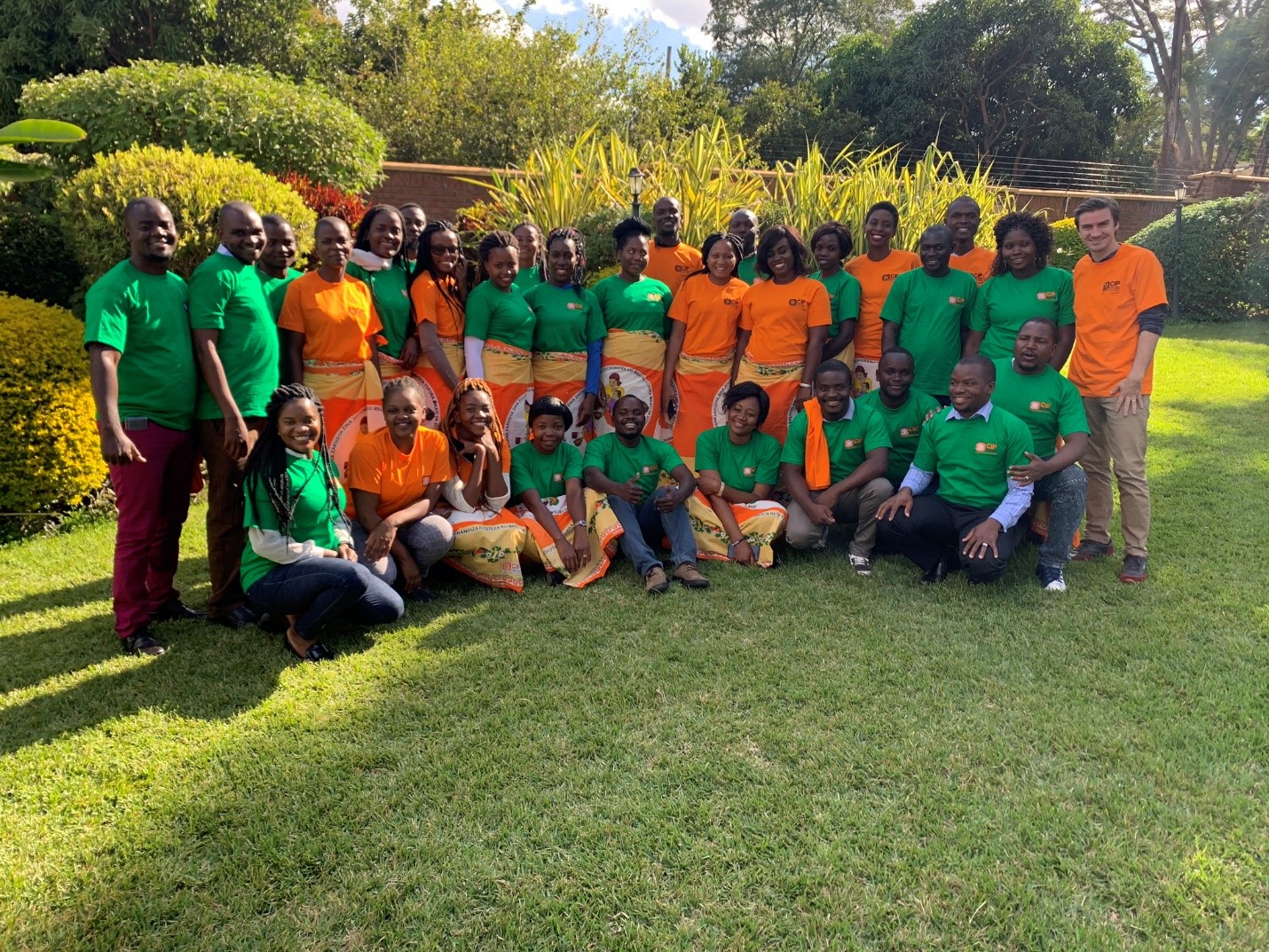
Survey design team. Photo credit Marcel Gatto/CIP
OFSP adoption rates remain high
Gatto and his team found that in 2019, 54% of the total households sampled were cultivating an OFSP variety. The results, however, showed clear differences between household types. The survey revealed that 66% of those households who participated in one of the projects were still cultivating OFSP two to three years after the last invention. The researchers were astonished to learn that 27% of the households who didn’t have any intervention were cultivating OFSP.
Interestingly, 48% of households that did not participate in an OFSP intervention but lived in intervention villages cultivated OFSP in 2019. These non-participants benefitted from OFSP interventions by receiving OFSP vines from neighbors (social networks) up to a year later after they were multiplied and disseminated in the same village by the original project beneficiaries. Social networks in villages therefore likely played a key role in accessing OFSP vines. The non-participants were also indirectly exposed to other project-related activities, such as trainings, skits, cooking demonstrations, information flyers, and radio programs.
In general, planting of OFSP varieties by any household would decrease several seasons after the last intervention since the planting material is not as readily available or is lost to long droughts and grazing cattle. “Given the reduced availability of planting material, these adoption rates are quite remarkable considering that OFSP varieties were introduced only 10 years earlier in Malawi,” said Julius Okello, an impact assessment specialist with CIP and a co-leader of the study. “It reflects a high level of investment in their dissemination and good acceptance from beneficiaries.”
Although the adoption rates of OFSP varieties were lower in the non-participating villages, the fact that OFSP was still found in those villages is an important finding. These communities generally seemed to adopt older varieties than those promoted in intervention areas. This is probably because of the time required for planting material and information to diffuse through the system but also because farmers still desire the older varieties as they know how to handle them. It is possible that certain project activities such as decentralized vine multiplication or radio programs spilled over to households in these communities.
The results also suggest that an active sharing culture of sweetpotato planting material exists after the end of a project or in the absence of a project. “Sharing is particularly high among women, but men are also important recipients of vines in Malawi, similar to what we have also found in other areas such as western Kenya,” said Okello. “This informal sharing culture suggests that more formal market transactions are still developing.”
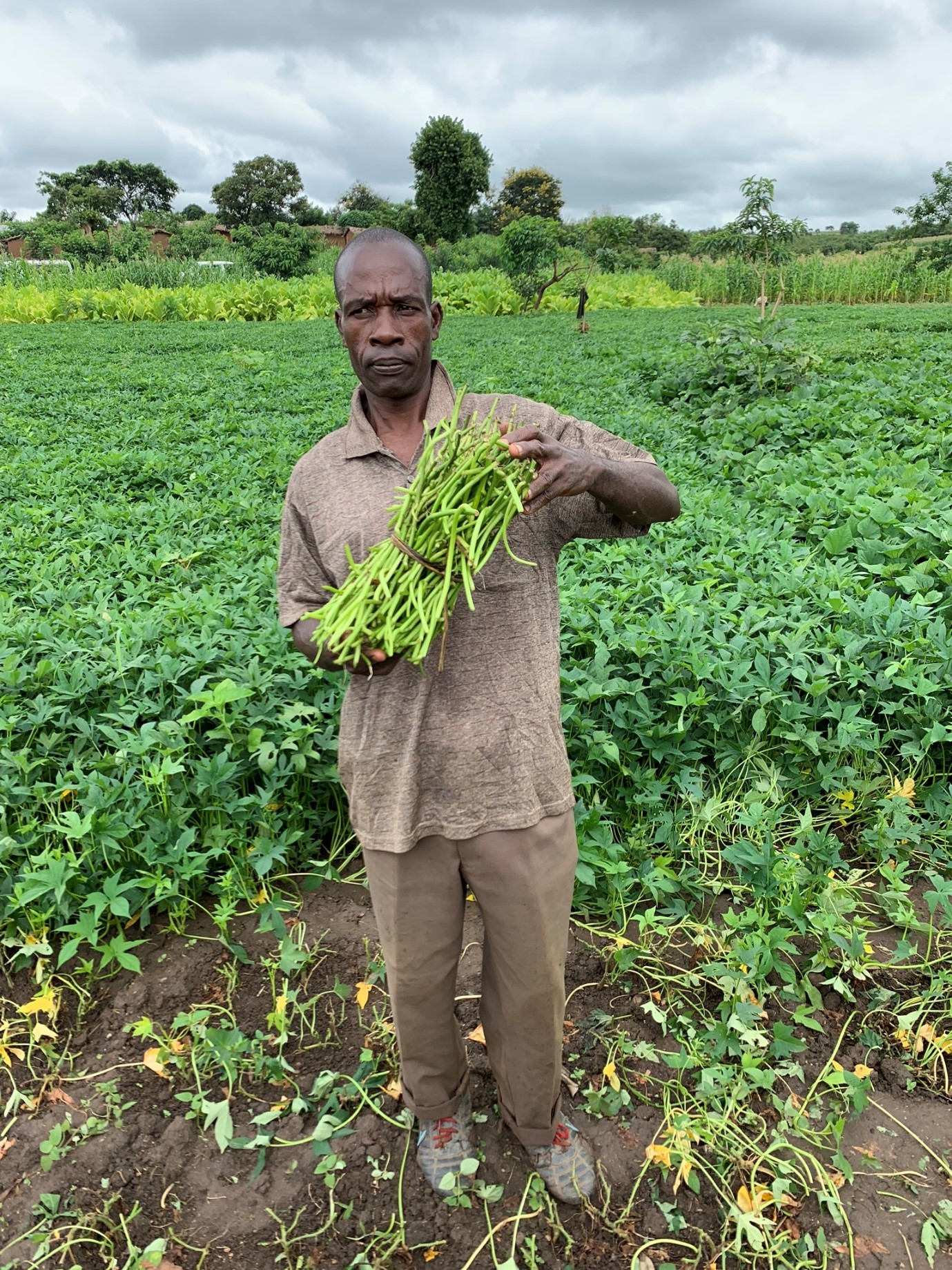
Malawian farmer in his field with his new varieties vines. Photo credit Marcel Gatto/CIP
Increasing the cost-efficiency of interventions
The spillover effect where non-participants had significant adoption rates provides some lessons about project design. “Delivery models don’t need to saturate communities to promote sustained adoption,” said Willy Pradel, an agricultural economist with CIP and co-author of the paper. Various forms of messaging about OFSP being a nutritious food may be strong enough to reach non-participants in the same community and beyond fast and achieve wider adoption. “That can really help increase the cost-efficiency of interventions.”
In addition to determining the rate of adoption, the survey also provided information on the access of planting material and information about OFSP; the regional and varietal differences and preferences for the adoption of sweetpotato varieties; sweetpotato cultivation practices, yields, and use practices; and availability and pricing of OFSP on the markets. The researchers also used DNA fingerprinting data to confirm the identity of varieties mentioned by farmers. “We found a significant mismatch between farmers’ and DNA varietal identification,” said Pradel. “Farmers under-reported the extent of adoption of OFSP varieties, and hence the effect of CIP and partners’ interventions.”
“This study is the first to estimate adoption of OFSP varieties in Malawi, after more than 10 years of dissemination investments from government and non-government organizations,” said Simon Heck, CIP’s Program Director for Sweetpotato Agrifood Systems “The results and information presented in this study will be useful in adjusting the design of future OFSP dissemination investments and in identifying potential complementary policy interventions to address the larger issue of vitamin A deficiency in Malawi and other countries.”
